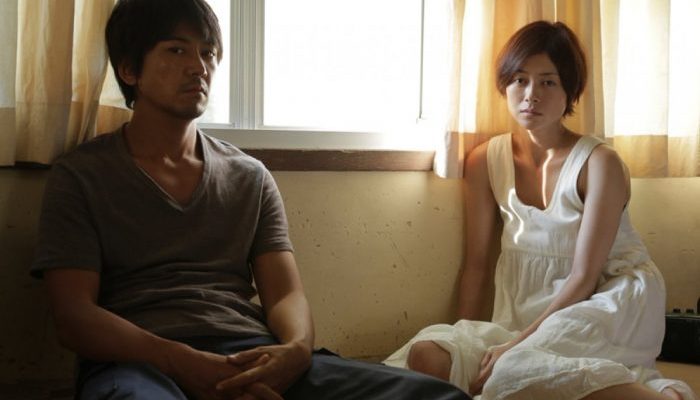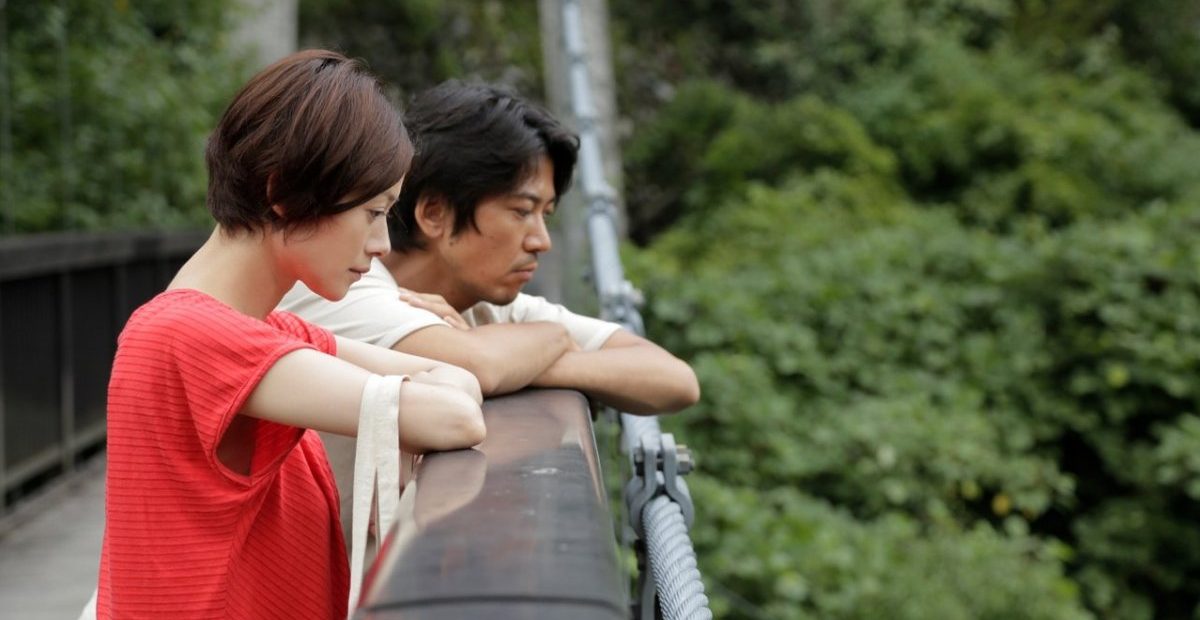By Gita Subaran
Director: Tatsushi Ohmori
Watch The Ravine of Goodbye on FilmDoo
The Ravine of Goodbye is a bittersweet story that takes place in the outskirts of Tokyo — or what is known as the valley of Mizunosato — where Satomi Tachibana has just been arrested for the murder of her young son, Megumu. As the tragic and horrific Mizunosato child murder case seems to have run its course, we soon discover another hidden truth through the eyes of magazine reporter Watanabe. Like a magic trick nothing is as it seems, and it is revealed that Satomi Tachibana’s neighbour, Shunsuke Ozaki, was involved in a gang-rape case sixteen years ago. As we dig deeper into this traumatic event, we find out that the victim of the rape case is none other than Ozaki’s wife, Kanako. The most disturbing part being that they now seem to be a happily married couple.
Yet the film presents itself as far more nuanced than we would initially expect. Through a series of flashbacks, we come to understand Kanako’s predicament as a rape victim and the path that led her back to Shunsuke who has been mortified with guilt even since the grim event. Although we are well aware that Shunsuke’s actions can never be forgiven, we manage to empathize with him and hope that both characters will end up finding happiness. Arguably, Kanako has made Shunsuke her prisoner, and is able to find comfort and solace through his suffering. It is clear from the start that she has the upper hand, initiating sexual intercourse when she sees fit. But as both characters grow in close proximity, they become prisoners of one another. As such, they are highly dependent and reliant on each other in order to forget the trauma of their past.

Throughout the whole film, the intrigue lies in the ties that bind people together or the distances that separate them from one another. There are also apparent similarities between Ozaki and Watanabe, who both had to abandon the prospect of being successful athletes in baseball and rugby, respectively. In contrast, while Ozaki seems to be enjoying married life with beautiful and sweet Kanako, Watanabe is constantly put down and rejected by his snappy and angry wife. Yet in the end, Watanabe reconciles with his estranged wife, whereas Shunsuke and Kanako face the moment they dreaded the most: letting go of each other. These emotional entanglements and conflicts of interest are at the core of what it means to be human, and Ohmori seems to adhere to the idea that things cannot be viewed as simply black or white. There is a grey area that needs to be acknowledged in all types of situations, and this is what is put forth in The Ravine of Goodbye. Here, while punishment inflicted or received seems to be the only solution to owning up to one’s actions or dealing with suffering, it is in fact forgiving and saying goodbye that truly cleanses the soul and allows the possibility to start anew.
In his fifth instalment, Tatsushi Ohmori reverts back to the artistry of the magician in the sense that we need to pay close attention to the events being laid before us. Even when it seems that there is not much going on, there is more than meets the eye. The trick here, or at least for Shunsuke and Kanako, is to look beyond the confines of their own comfort zones.
Watch The Ravine of Goodbye on FilmDoo.
FilmDoo Also Recommends








